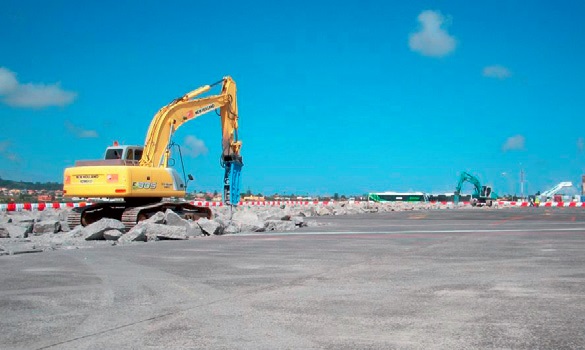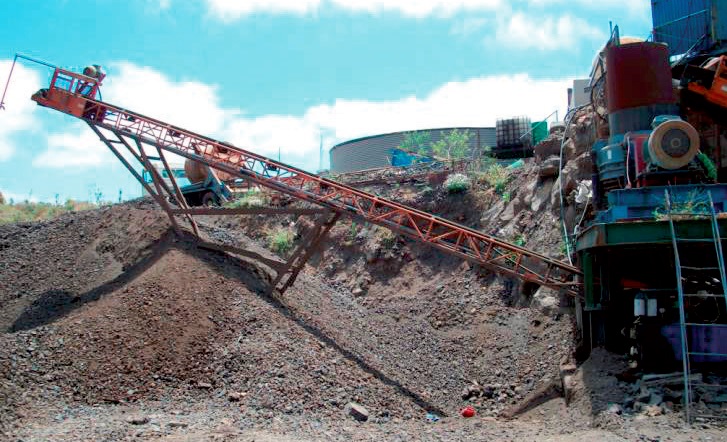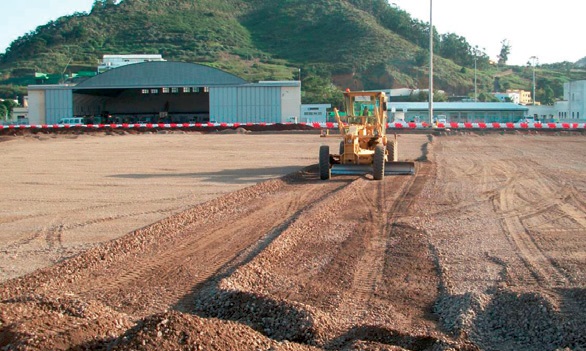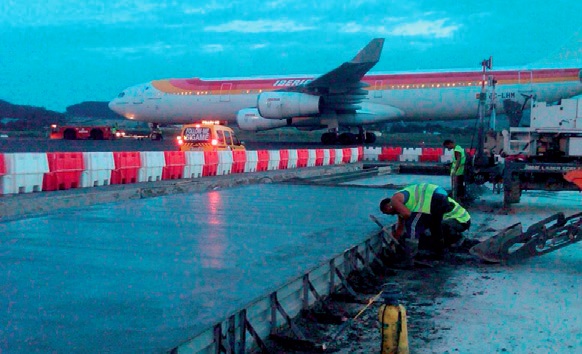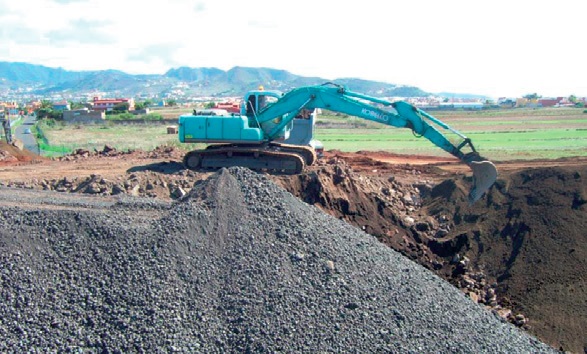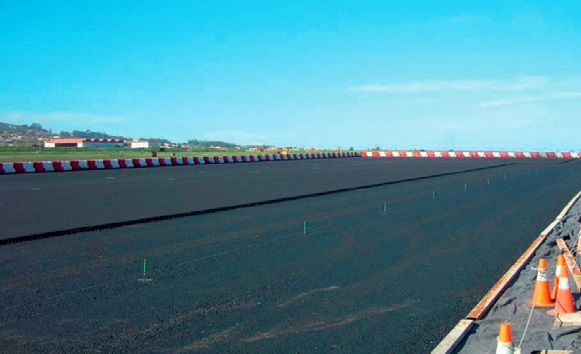North Tenerife Airport
Description of the Environmental Measure
Problem detected:
The work consisted in the demolition and rebuilding from the sub-base level of most of the apron at North Tenerife Airport.
Specifically, a concrete slab apron had to be demolished and resurfaced; the slabs were 30 cm thick as well as an apron with 35 cm thick asphalt agglomerate. A series of structural repairs were also required on a concrete slab platform 35 cm thick.
These works generated 51,000 tonnes of rubble from the demolition of the concrete and 21,000 tonnes of asphalt agglomerate rubble, which, according to the building project, had to be removed and dumped at an authorised dumping site. In this regard, it must be borne in mind that the project was being executed on an island, which due to the fact that it is a tourist destination and possesses natural scenery of great value, is particularly sensitive in terms of environmental protection and is also subject to strict limitations when it comes to areas for dumping.
Solutions adopted:
In view of the amount of material that had to be transported to the tip, alternatives were considered from the outset to reduce or monetise the material, with the aim of maximising the environmental and economic outcome.
After demolishing the existing slabs, it was discovered that the quality of the 'picón' (pyroclastic basalt often used in the Canary Islands as a sub-grade) was insufficient for re-use and would not meet the requirements for the sub-grade of an apron parking area for aircraft. To resolve this problem, the solution proposed consisted in re-using the material from the crushed concrete slabs and converting it into an artificial aggregate; meanwhile the excavated basalt was placed at the disposal of the airport for use in landscaping.
As for the asphalt agglomerate slab, this was milled and placed at the disposal of the airport to build an operations apron in the area used for stockpiles.
Results:
With the solutions described, it has been possible to upgrade all of the debris from the works, that is to say, 100% of the demolished airport apron.
First of all, the amount of concrete rubble from the demolished slabs taken to tips was reduced to zero. Then, the basalt extracted from beneath the slabs was re-used as material for landscaping and for fill in areas that were not load-bearing, thereby obviating the need to purchase such materials. Finally, the milled asphalt surface provided the material required to build an operations apron for the airport.
The success of the project, which has helped to make the project more economically viable, its contribution to the protection of the environment and the company's corporate image, merited the award for the most eco-efficient project that improves the company's results in the III International Eco-efficiency Awards of the FCC Group.









